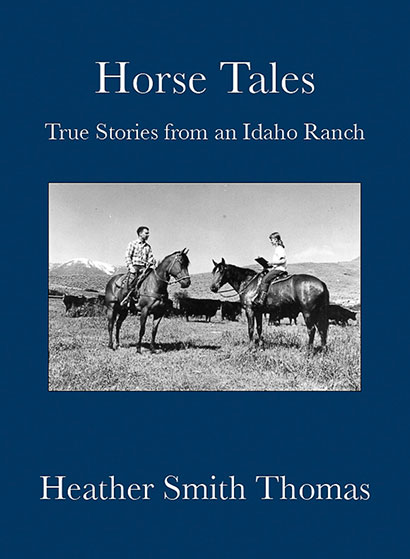The following are some thoughts she shared with Progressive Cattleman on her new book and her work with horses.
You’ve written many books on horses and cattle. What motivated you to share these stories about your own horses?
This is a book I’ve always wanted to write – as opposed to the many “how to” books I’ve written – because this one shares personal stories and feelings with the reader. It combines some history, some autobiographical material, some “how to” information as I tell about various things I learned and did with my horses, and fond reminiscences of favorite horses in my life. I felt that many horse owners could relate to these experiences and adventures with horses.
You explain how your parents were not originally ranchers or farmers. Your father was a pastor who lived in town. Did your desire to own a horse lead the family into adopting a more rural lifestyle?
My desire to have a horse did lead to a more rural lifestyle for our family – since we needed a place to keep the horse. This was also a chance for my father to eventually get back to the land and have a few horses and cattle again. He enjoyed the livestock on the farm near Rupert where he grew up, and enjoyed having livestock and horses again after my childhood insistence resulted in getting a horse.
What in your experience has been the greatest challenge to raising horses?
There are multiple challenges, including the efforts and innovation involved when working with their various needs (physical and mental) to keep them healthy and sound in body and mind, and when training some of the very independent ones.
Probably the biggest challenge for me has been the emotional challenge when dealing with the worry when something goes wrong or the grief of losing one. Having to put a horse down due to infirmities of old age is hard enough (when they’ve been part of the family for 25 to 30 years), but losing a foal, or a foaling mare, or a young horse in its prime is really hard.

A number of beef producers now choose to use ATVs for beef production. How does the use of horses help on the beef ranch?
Cattle can be readily trained to be worked and handled with either an ATV or horses, and both methods work well, especially when the producer uses low-stress handling, but there are several advantages when using horses.
It’s much easier to sort cattle with horses – quietly going into the herd and bringing out the selected animals – and definitely more feasible to use horses in rugged terrain.
We’ve used motorcycles and ATVs for irrigating, checking gates on the roads, etc., but could never have operated our ranch without horses because the cattle ran on rugged mountain pastures in the summer. Riding was the only way to check them, move them, bring one home, check fences, gates and water troughs, etc.
You write in the book:
“As a young horse owner, I learned that love is a two-way street. We love the creatures put into our care, but we also have a great responsibility to do what’s best for them, in life and also when it comes time to end that life.”
What are some keys to making sure beef producers meet that “great responsibility” both with horses and cattle?
We have to remember that these animals are here only because we chose to own them and raise them. They exist because of us and our desires. Thus we have a great responsibility to care for them as best we can. When we accept that responsibility as part of good husbandry, we put their needs first – and at times that means making the painful decision of when and how to end a life that is no longer tolerable for that animal.
The 282-page book, priced at $24.95, will be available at Amazon.com, BarnesAndNoble.com, Powells.com and other online retailers.
PHOTOS
TOP: Heather Smith Thomas and her brother, Rocky, riding Possum at the family cabin in 1954. Photo provided by Heather Smith Thomas.
BOTTOM: The book jacket of Horse Tales: True Stories from an Idaho Ranch. Photo provided by The Frontier Project Inc.






